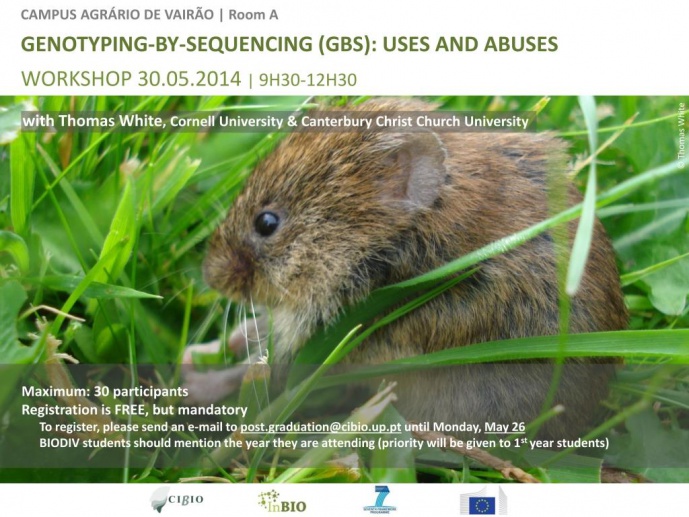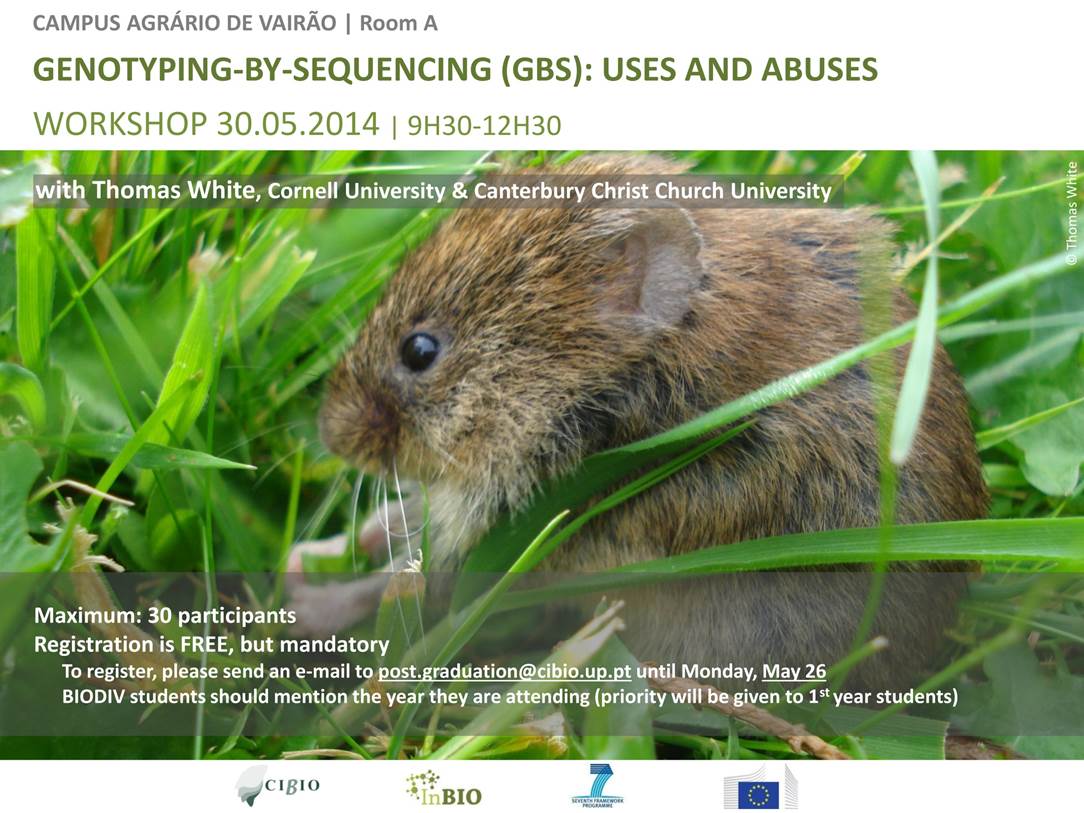GENOTYPING-BY-SEQUENCING (GBS): USES AND ABUSES


ABOUT THIS WORKSHOP
Genotyping-by-Sequencing (GBS) is potentially a very useful technique for genotyping model and non-model organisms quickly and cheaply at many thousands of loci simultaneously. However, the technique is relatively new and specific considerations and biases are starting to emerge. In this workshop, Thomas White will describe how to conduct a GBS analysis, from tissue collection to bioinformatics analysis. Tom will highlight some of the potential pitfalls on the way, and possible solutions.
ABOUT THOMAS WHITE
Thomas White did his Biology degree, MRes in Bioinformatics, and PhD with Jeremy Searle at the University of York in the UK, before moving to Durham University for his first Post-doc. Tom was then awarded a Marie Curie Fellowship to study at both Cornell University in the USA and the University of Bern in Switzerland. His main interest is in evolutionary population genetics, with a particular focus on how populations are able to survive and adapt to new environments despite being small or having passed through severe bottlenecks. During his PhD, Tom studied the ecology, evolution and genetics of common shrews (Sorex araneus) on Scottish islands. During his Marie Curie Fellowship, he used next-generation sequencing to shed light on the selective and demographic history of the bank vole (Clethrionomys glareolus), in Ireland. Tom is also interested in studying hybrid zones for the light they can shed on the interaction of selection, dispersal and linkage, and the speciation process. He is currently involved in a number of projects studying hybrid zones in a variety of taxa.
For further information, please contact post.graduation@cibio.up.pt.
Image credits: Thomas White